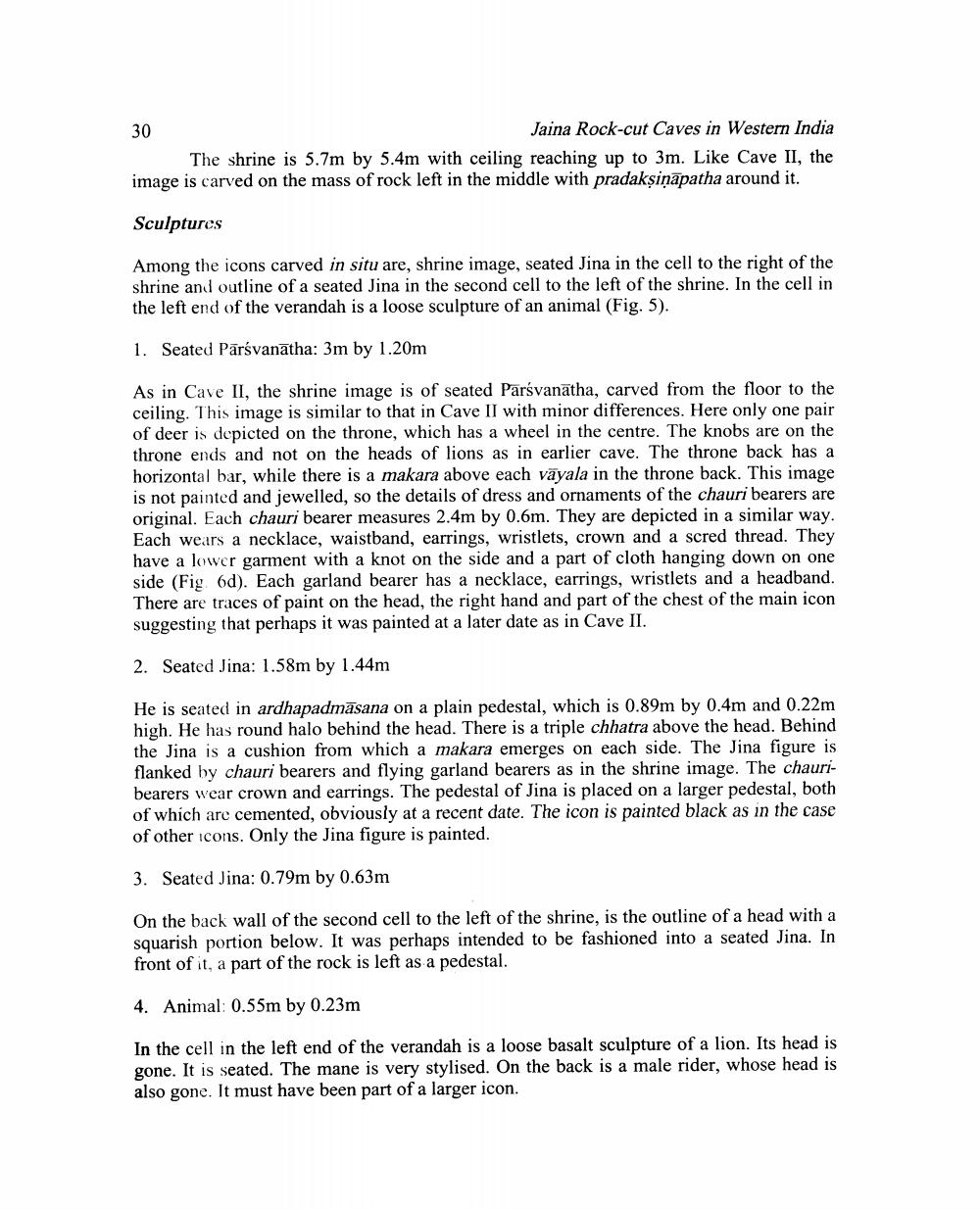________________
30
Jaina Rock-cut Caves in Western India The shrine is 5.7m by 5.4m with ceiling reaching up to 3m. Like Cave II, the image is carved on the mass of rock left in the middle with pradaksiņāpatha around it.
Sculptures
Among the icons carved in situ are, shrine image, seated Jina in the cell to the right of the shrine and outline of a seated Jina in the second cell to the left of the shrine. In the cell in the left end of the verandah is a loose sculpture of an animal (Fig. 5).
1. Seated Pārsvanātha: 3m by 1.20m
As in Cave II, the shrine image is of seated Parsvanātha, carved from the floor to the ceiling. This image is similar to that in Cave II with minor differences. Here only one pair of deer is depicted on the throne, which has a wheel in the centre. The knobs are on the throne ends and not on the heads of lions as in earlier cave. The throne back has a horizontal bar, while there is a makara above each vayala in the throne back. This image is not painted and jewelled, so the details of dress and ornaments of the chauri bearers are original. Each chauri bearer measures 2.4m by 0.6m. They are depicted in a similar way. Each wears a necklace, waistband, earrings, wristlets, crown and a scred thread. They have a lower garment with a knot on the side and a part of cloth hanging down on one side (Fig 6d). Each garland bearer has a necklace, earrings, wristlets and a headband. There are traces of paint on the head, the right hand and part of the chest of the main icon suggesting that perhaps it was painted at a later date as in Cave II.
2. Seated Jina: 1.58m by 1.44m
He is seated in ardhapadmāsana on a plain pedestal, which is 0.89m by 0.4m and 0.22m high. He has round halo behind the head. There is a triple chhatra above the head. Behind the Jina is a cushion from which a makara emerges on each side. The Jina figure is flanked by chauri bearers and flying garland bearers as in the shrine image. The chauribearers wear crown and earrings. The pedestal of Jina is placed on a larger pedestal, both of which are cemented, obviously at a recent date. The icon is painted black as in the case of other icons. Only the Jina figure is painted.
3. Seated Jina: 0.79m by 0.63m
On the back wall of the second cell to the left of the shrine, is the outline of a head with a squarish portion below. It was perhaps intended to be fashioned into a seated Jina. In front of it, a part of the rock is left as a pedestal.
4. Animal: 0.55m by 0.23m
In the cell in the left end of the verandah is a loose basalt sculpture of a lion. Its head is gone. It is seated. The mane is very stylised. On the back is a male rider, whose head is also gone. It must have been part of a larger icon.




